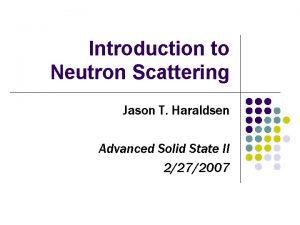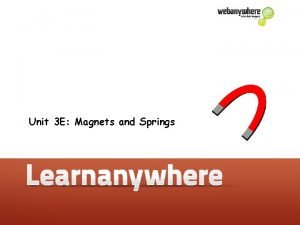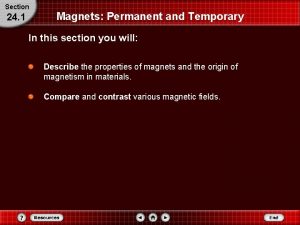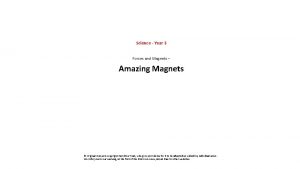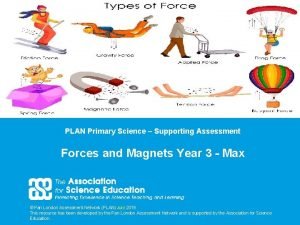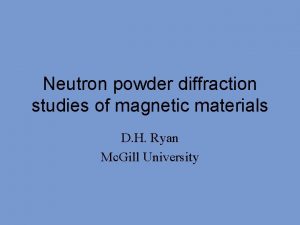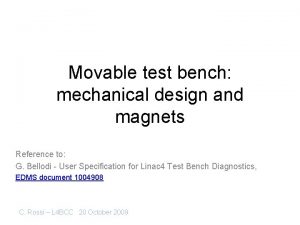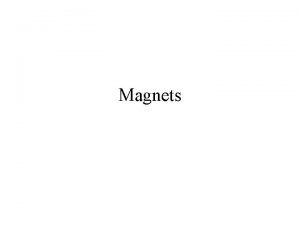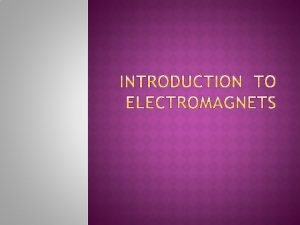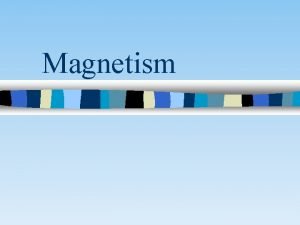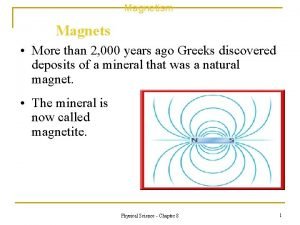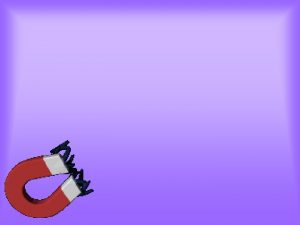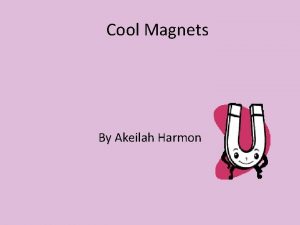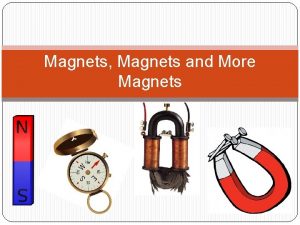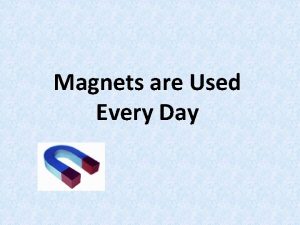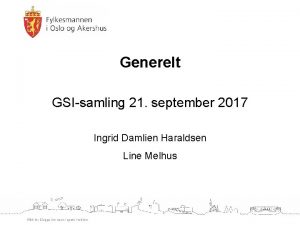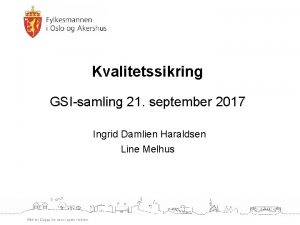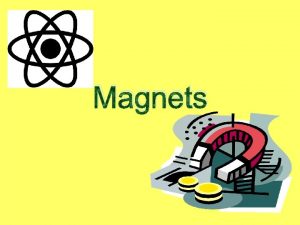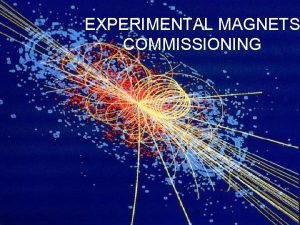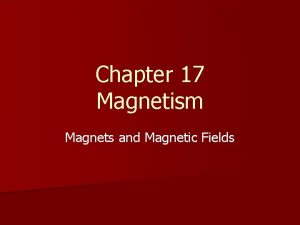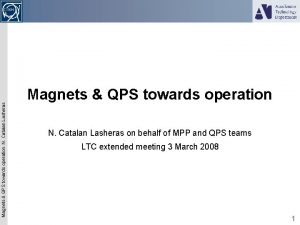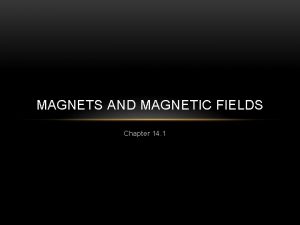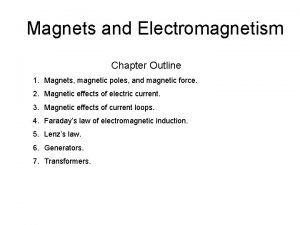Introduction to Molecular Magnets Jason T Haraldsen Advanced




















- Slides: 20

Introduction to Molecular Magnets Jason T. Haraldsen Advanced Solid State II 4/17/2007

Basic Molecular Magnets Mn 12 -acetate, S = 10 Fe 8 Br 8, S = 10 [Mn 12 O 12(CH 3 OO)16(H 2 O)4]. 2 CH 3 COOH. 4 H 2 O 4 Spin-3/2 8 Spin-2 V 15, S = 1/2 [V 15 As 6 O 42(H 2 O)]K 6 [(C 6 H 5 N 3)6 Fe 8(µ 3 -O)2(µ 2 -OH)12]Br 7(H 2 O)Br. 8 H 2 O 8 Spin-5/2 15 Spin-1/2

Molecular Magnets: Na. Cu. As. O , S = 0 By Definition 4 Isolated clusters containing ionic spins ranging from as few as two to up to several dozen. Molecular magnets are not limited to molecular solids. No long range order. S. Nagler et. al. Unpublished

Heisenberg Spin-Spin Exchange Hamiltonian J > 0 is antiferromagnetic Anisotropic and Zeeman terms may be added to give a more complete description of a given material. J < 0 is ferromagnetic

Molecular Magnets: Theory and Model Heisenberg Hamiltonian plus anisotropy and Zeeman terms

Molecular Magnets: Theory and Model Ising and XY Variations

Molecular Magnets: Dimensionality Hilbert Space For mixed valance systems For spin symmetric systems Examples of how dimensionality increases in systems Spin-1/2 Dimer Spin-1/2 Pentamer Spin-3/2 Pentamer [Mn 12 O 12(CH 3 OO)16(H 2 O)4]. 2 CH 3 COOH. 4 H 2 O

Experimental Techniques Bulk Quantities Microscopic Quantities Magnetization Inelastic Neutron Scattering Magnetic Susceptibility Raman Scattering Heat Capacity Infrared Spectroscopy

Magnetization Examines the overall magnetic moment. Steps denote magnetic spin flips in the material. J. Schnack et. al. PRB (2006)

Magnetic Susceptibility Change in magnetization over change in magnetic field. J. T. Haraldsen et. al. PRB (2005)

Heat Capacity The ability of a material to store heat as a function of temperature. The peak corresponds to either a cooperative phase transition or an anomaly. J. T. Haraldsen et. al. PRB (2005)

Effects of Dimensionality on Complexity J. T. Haraldsen et. al. PRB (2005)

Inelastic Neutron Scattering Tennant et. al, PRL (2005) Excitation Energy Measures the dispersion relationship of energy transfer and momentum transfer. Structure Factor Intensity

Infrared and Raman Spectroscopy Not usually thought of when discussion magnetic transitions. Activated when a magnetic system has an anisotropic interaction. Usually coupled to lattice excitations through the typically selections rules of dipole moment (Infrared) and polarizability (Raman). �- Na. VO T. Room et. al. PRB (2002)

Simplest Molecular Magnet: Spin 1/2 Dimer

The Textbook Dimer: VO(DPO 2) • 0. 5 H 2 O Spin-1/2 vanadium system. Vanadium ions are arranged structurally in a lattice. Magnetic properties show the presence of an isolated dimer. Tennant et. al, PRL (2005)

Magnetic Susceptibility of VO(DPO 2) • 0. 5 H 2 O J. W. Johnston et. al. , J. Am. Chem. Soc. (1984)

The Textbook Dimer: VO(DPO 2) • 0. 5 H 2 O Experiment Energy (me. V) Predicted q (Å-1) D. A. Tennant et. al. PRL (1997) A = 4. 37 Å E = J = 7. 86 me. V

The Textbook Dimer: VO(DPO 2) • 0. 5 H 2 O The use of magnetic measurements on the material of VODPO 4 • ½ D 2 O clarified the magnetic structure of the material. V 4+ Tennant et. al, PRL (2005)

Summary Molecular magnets are magnetically isolated clusters that exhibit no long range magnetic ordering Many techniques, both bulk and microscopic, can be used to determine the magnetic structure. Magnetic structure is not always obvious from an examination of the crystal structure.
 Jason t. haraldsen
Jason t. haraldsen Arild haraldsen
Arild haraldsen Melting and boiling point of oxygen
Melting and boiling point of oxygen Giant molecular structure vs simple molecular structure
Giant molecular structure vs simple molecular structure Giant molecular structure vs simple molecular structure
Giant molecular structure vs simple molecular structure Magnets for year 3
Magnets for year 3 Magnets and springs
Magnets and springs Difference between permanent magnet and temporary magnet
Difference between permanent magnet and temporary magnet Attract repel
Attract repel Why do magnets repel
Why do magnets repel 642008419
642008419 Amazing magnets
Amazing magnets Why do magnets repel
Why do magnets repel Are electromagnets permanent or temporary
Are electromagnets permanent or temporary Gmx problem
Gmx problem Natural magnets examples
Natural magnets examples Why do magnets repel
Why do magnets repel Iodestones
Iodestones Is magnetism an invisible force
Is magnetism an invisible force Scrap yard crane electromagnet diagram
Scrap yard crane electromagnet diagram The properties and interactions of magnets
The properties and interactions of magnets
